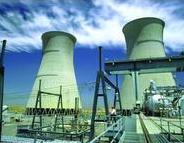Gansu million industrial added value high power consumption
A ballcock (also balltap or float valve) is a mechanism or machine for filling water tanks, such as those found in flush toilets, while avoiding overflow and (in the event of low water pressure) backflow. The modern ballcock was invented by José Antonio de Alzate y RamÃrez, a Mexican priest and scientist, who described the device in 1790 in the Gaceta de Literatura Méxicana.[1] It consists of a valve connected to a hollow sealed float by means of a lever, mounted near the top of the tank. The float is often ball-shaped, hence the name ballcock. The valve is connected to the incoming water supply, and is opened and closed by the lever which has the float mounted on the end. When the water level rises, the float rises with it; once it rises to a pre-set level, the mechanism forces the lever to close the valve and shut off the water flow. This is an example of negative feedback and of proportional control. Ball Cock, Brass Ball Bibcock, Ballcock Valve, Toilet Ballcock Valve ZHEJIANG KINGSIR VALVE CO., LTD. , https://www.kingsir-valves.com The Gansu Provincial Commission of Industry and Information Technology has for the first time published 44 clean energy production social responsibility reports for key energy-using companies to promote the social responsibility of industrial enterprises to perform clean production, achieve economical and intensive use of resources and develop a recycling economy.
The Gansu Provincial Commission of Industry and Information Technology has for the first time published 44 clean energy production social responsibility reports for key energy-using companies to promote the social responsibility of industrial enterprises to perform clean production, achieve economical and intensive use of resources and develop a recycling economy.
Gansu Province is the cradle of China's petrochemical, aerospace and nuclear industries and the base of the non-ferrous metallurgical industry. The industrial structure is characterized by the structure of heavy chemical industry, and the utilization of resources and energy of industrial enterprises is relatively low. According to statistics, at present, the electricity consumption per 10,000 yuan of industrial added value in Gansu Province is 2.4 times of the national average, and the energy saving and emission reduction is facing greater pressure during the “12th Five-Year Plan†period.
From April 2012, the Ministry of Industry and Information Technology of Gansu Province began to organize key energy-using enterprises with annual energy consumption of more than 100,000 tons of standard coal in the province to start writing social responsibility reports, and selected the theme of “cleaner production†to promote these industrial enterprises. Sustainable cleaner production. Since then, a total of 44 companies in Gansu Province have submitted reports, but two companies have not submitted reports. After careful review, these reports are released to the community.
“The core of social responsibility is to effectively manage corporate operations, promote sustainable clean production, and participate in public welfare undertakings should be the voluntary behavior of the company.†Wen Longjia, Deputy Director of the Gansu Provincial Commission of Industry and Information Technology, said that he hopes to make the report These enterprises achieve the goals of energy saving, consumption reduction, pollution reduction and efficiency enhancement.
According to the published report, a number of industrial enterprises in Gansu Province have fulfilled their social responsibilities through a number of clean production methods. Among them, the company invested 700 million yuan to implement pollution reduction projects, and took responsibility for solving the problem of the innocuous disposal of 160,000 tons of chromium residue and newly generated chromium slag left over from the history of Gansu Province; Jinchuan invested 2.3 billion yuan. The implementation of the “blue sky and clear water†project has enabled the company’s waste gas treatment and wastewater recycling to be significantly improved.
It is understood that the Ministry of Industry and Technology of Gansu Province is gradually establishing a corporate social responsibility report according to the annual periodical release system, and fully mobilize the public to actively supervise the implementation of clean production social responsibility by the company. The government, enterprises and the society shall jointly promote clean production.